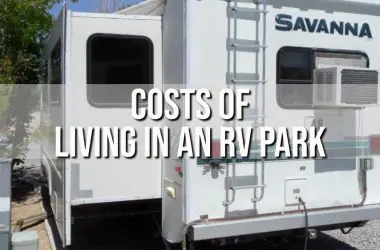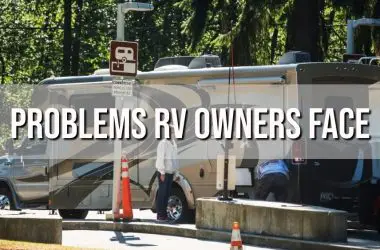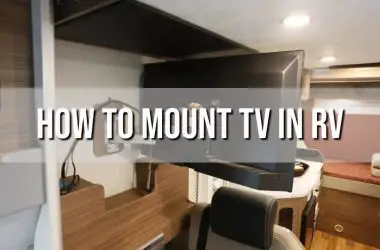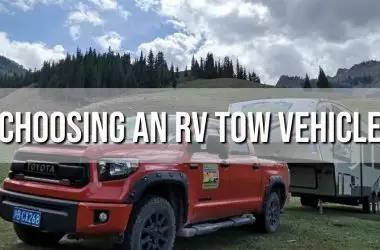What is Toterhome? Toterhome refers to a type of recreational vehicle (RV) that is built on a semi-truck chassis. It combines the living amenities of a motorhome with the power and hauling capabilities of a commercial truck. Toterhomes are essentially customized or converted semi trucks designed for comfortable living and traveling.
A toterhome allows RV owners to bring more gear, toys, and cargo thanks to the massive storage capacity. The heavy-duty chassis also enables driving in more rugged, off-road conditions. Toterhome owners enjoy convenience, luxury, and adventure all rolled into one unique vehicle.
Key Takeaways
- Toterhomes are RVs built on semi-truck chassis, offering living space and huge hauling capacity.
- Types include converted semi trucks, custom motorhomes on truck chassis, and high-end luxury models.
- Benefits include storage capacity, performance, luxury features, and ability to haul heavy loads.
- Drawbacks can be high costs, maintenance needs, and challenging driving.
- Consider layout, features, brand reputation when buying new or used.
- Proper maintenance is crucial for engine, chassis, RV components.
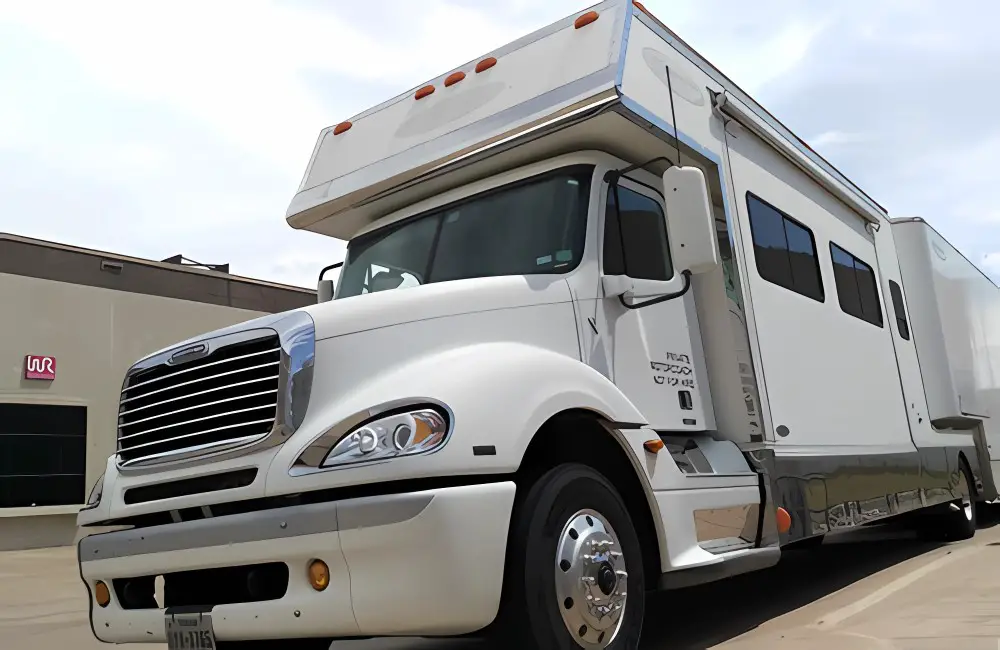
Understanding Toterhome
The term “toterhome” comes from the concept of using a heavy-duty truck to “tote” around your home. Toterhomes are considered a subclass within the Type A motorhome category, the largest RV type. The key difference from standard Type A motorhomes is the commercial chassis which makes toterhomes stand apart.
Toterhomes range widely in size, but average 35-45 feet long. Their width is also greater than typical RVs, usually ranging from 101-108 inches wide. The increased dimensions provide a spacious interior that feels residential. Height is another distinguishing factor, with toterhomes standing 11-13 feet tall, which is noticeably taller than the average RV.
The defining characteristic is the sturdy commercial chassis which gives toterhomes their rugged durability and ample cargo capacity. Popular chassis manufacturers include Freightliner, International, Kenworth, Peterbilt, Volvo, and Mack. The chassis has a Gross Vehicle Weight Rating (GVWR) of 25,000 to 33,000 pounds.
The heavy duty frame supports greater towing and cargo loads. It also enables diesel pusher engines packing 400-600 horsepower. This makes toterhomes well-suited for off-road excursions and handling tough driving conditions.
Types of Toterhome
There are a few different types of toterhomes:
Converted Semi Trucks – These involve modifying a stock commercial semi truck into a DIY toterhome. The truck’s sleeper cabin gets retrofitted into a living space. All interior upgrades are custom designed and installed. Converting a semi truck into a toterhome is the most budget-friendly option but requires time and effort.
Custom Motorhome Conversion – This is working with an RV manufacturer to build a custom toterhome on a commercial chassis. Floor plans can be tailored to your needs. The ultra heavy duty foundation supports higher-end appliances and finishes. Many luxury features can be incorporated.
Luxury Toterhomes – These are production models from RV brands like Foretravel, Marathon, and AmeriCoach built on heavy truck chassis. They offer residential styling and top-notch appointments. Materials like tile, hardwood, granite, and leather create a lavish interior. Prices can exceed $1 million.
Renegade Toterhomes – Renegade is one of the most recognized toterhome manufacturers. They offer an array of models from basic to luxurious built on Freightliner or Spartan chassis. Renegade RV prides itself on easy handling and off-road capabilities.
No matter the type, all toterhomes allow owners to explore off-grid locations in luxury while having ample cargo space for toys, vehicles, gear and more. The heavy-duty underpinnings provide a stable towing platform and smooth ride. The cavernous interior enables comfortable full-time living.
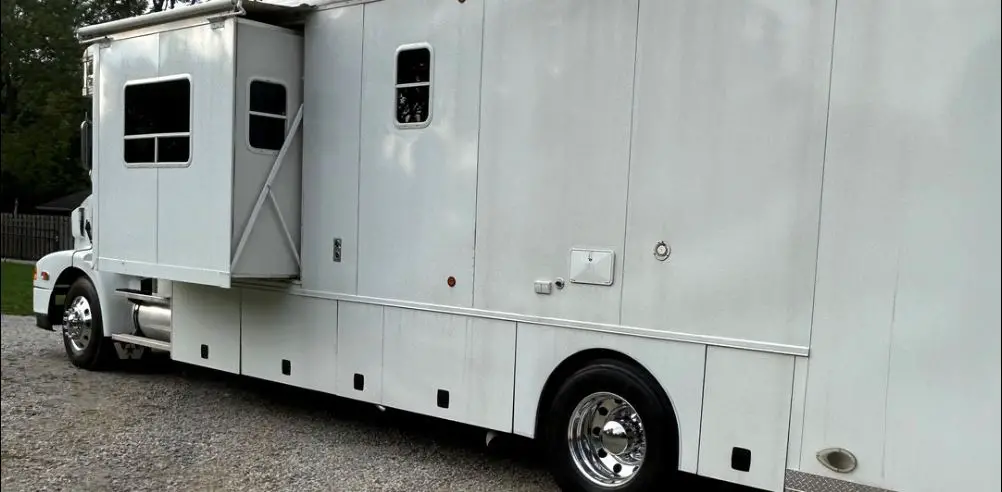
Key Features of Toterhome
Toterhomes contain many specialized features that differentiate them from standard RVs. Some key elements that define toterhome designs include:
Living Space
The living area of a toterhome feels residential and spacious. Multiple slide-outs with giant windows allow natural light. High ceilings create an airy environment and prevent a cramped feeling.
Creative storage solutions like roll-out shelving, hidden cabinets, and drop-down desks maximize living space. Energy efficient appliances like convection ovens and washer/dryers come standard. Heated floors, fireplaces, and spa-like bathrooms provide comforts of home.
Storage Capacity
From basement cargo areas to exterior bays, storage is seemingly endless in a toterhome. Expect at least 200 cubic feet of basement storage to tuck away furniture, tools, sporting equipment and more. Enormous front trunks swallow bulky items.
Many models allow stacking washer/dryer units to free up precious interior room. Abundant exterior compartments organize gear for easy access. Thoughtful shelving and cargo tracks keep storage areas tidy. Exceptional space means bringing everything along for the journey.
Cargo Capacity Comparison
| RV Type | Cargo Capacity |
|---|---|
| Type A Motorhome | 25-100 ft3 |
| Type C Motorhome | 50-150 ft3 |
| Fifth Wheel | 100-200 ft3 |
| Toterhome | 200+ ft3 |
Engine and Performance
Toterhomes leave traditional RVs in the dust when it comes to performance. Powerful diesel engines output 400-600 horsepower with massive torque. Allison transmissions smoothly transfer power to the drive wheels.
The heavy duty chassis handles like a truck, absorbing shocks and minimizing sway. Strong braking quickly slows the massive vehicle. Increased ground clearance enables traversing uneven terrain with ease.
Onboard generators produce ample electricity to power all systems without hookups. The robust foundation and weight distribution provide stability for passengers and cargo at high speeds or off-road.
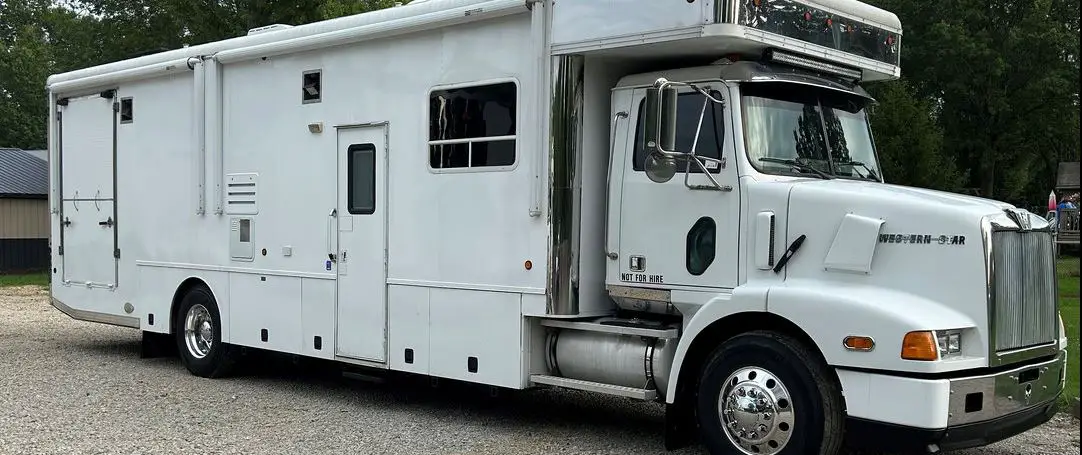
Benefits of Owning a Toterhome
Toterhomes offer many advantages that appeal to a certain type of RV enthusiast. Perks include:
Comfort and Convenience
Toterhomes allow owners to enjoy residential luxuries while traveling off-grid. Full-body paint lends a sleek exterior look. Multiple slide-outs create spacious living areas. High-end kitchens have granite countertops and stainless steel appliances.
Thoughtful details like heated floors, larger showers, adjustable lighting, and USB ports maximize convenience. Automatic leveling systems simplify setup. Integrated tank monitors and water filtration simplify RV duties.
Mobility and Versatility
With their robust construction, toterhomes can traverse diverse landscapes from winding mountain passes to rutted dirt trails. Increased ground clearance and heavy duty shocks provide stability over rugged terrain.
Their versatility also stems from ample cargo space to haul toys like ATVs, motorcycles, kayaks, etc. Many include drop-down rear platforms for easy loading and generator fueling. Durable chassis and strong towing capacity allow pulling cars, trailers and more.
Durability and Safety
A toterhome’s heavy duty bones provide enhanced protection for passengers and belongings inside. Sturdy drive trains withstand harsh conditions. Thick insulation and robust exterior components add durability.
Safety features like side airbags, collision avoidance, and adaptive cruise control are standard. Chassis architecture helps prevent rollovers. Built-in tank heaters avoid freezing. Cargo tie-downs safely secure loads.
With their truck platforms, toterhomes instill confidence for full-time RV living or long expeditions into the unknown. Their unmatched construction tackles tough terrain in comfort.
Potential Drawbacks of Toterhome
While toterhomes have many advantages, there are also some potential disadvantages to consider:
Initial Cost
Toterhomes sit at the top end of the RV price spectrum, with an average starting MSRP from $350,000 up to $1 million plus. Converting a semi truck or building a custom toterhome also incurs significant labor expenses. Luxury models have premium price tags.
Even used toterhomes tend to run higher than other RV types. The advanced engineering and robust construction require major initial investment that is out of reach for some buyers.
Maintenance and Running Costs
From their powerful engines to complex electronics, toterhomes need proper professional service to stay in top shape. Parts and labor rates can run high for chassis, drivetrain, and coach maintenance.
Toterhomes get 6-10 mpg, so fuel costs add up quickly. Registration, insurance, loan payments, and storage fees are higher as well. Ongoing costs take financial commitment to maintain a toterhome.
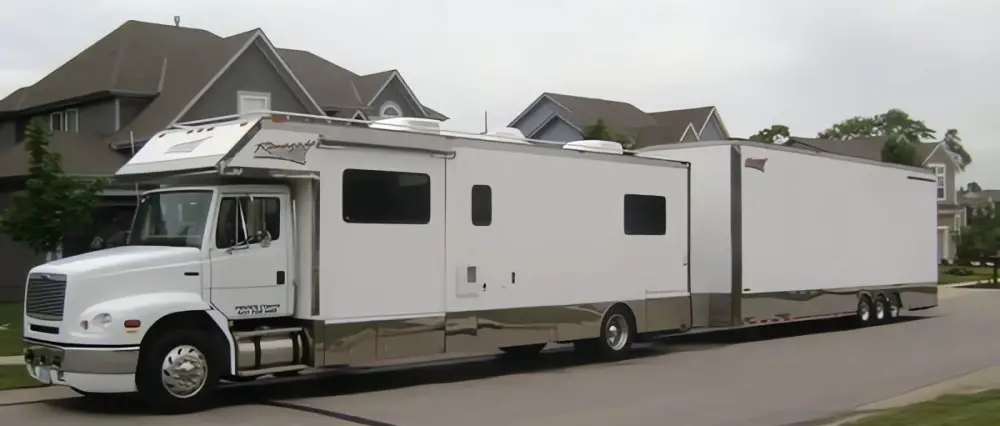
Buying a Toterhome
For those considering purchasing one of these unique RVs, here are some tips on shopping new or used:
New vs Used
New – Going new allows customizing the floorplan and features to your lifestyle. The latest amenities and innovations come standard. Structural warranties provide peace of mind. There is no odometer ambiguity. New financing may have better rates.
Used – Pre-owned toterhomes offer similar features for lower prices. The depreciation hit softens sticker shock. Searching nationwide expands inventory options. Private sellers may negotiate pricing. Shorter loan terms keep payments lower.
Factors to Consider
Price – Set a realistic budget and anticipate ongoing costs. Shop used inventory for better value. Look for special financing incentives from dealers.
Layout – Evaluate floorplans to find one suiting your needs. Prioritize must-have features like washer/dryer, master bed size, etc. Consider special build options.
Brand Reputation – Research brands known for quality construction and service. Stick with proven manufacturers for a complicated vehicle.
Condition – For used models, inspect chassis mileage, service records, exterior/interior condition thoroughly. Perform a pre-purchase inspection by a mechanic.
Features – Compare amenities like slide rooms, appliances, entertainment systems, smart tech, etc. Pick luxury features matching your budget and needs.
Road Testing – Test driving a toterhome is important to gauge handling, power and fit. Don’t commit until taking a thorough test drive.
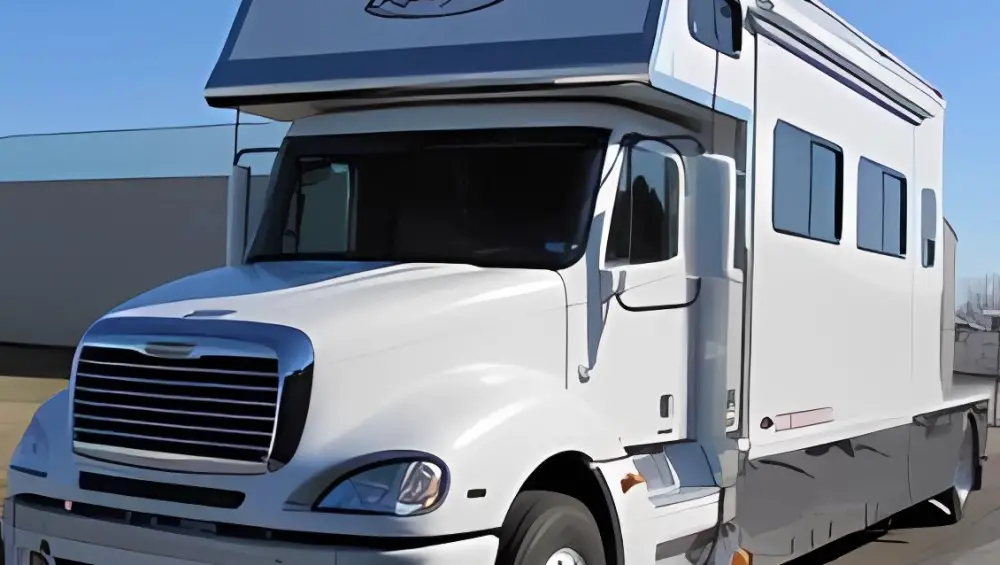
Maintaining a Toterhome
Given their complexity, toterhomes require diligent maintenance and care. Here are some tips for maximizing longevity and performance:
Routine Maintenance
Chassis – Follow OEM guidelines for oil changes, lubrication, filter changes, belt inspection, tire rotations, brake checks, etc. Complete recommended service based on mileage.
Generator – Change oil and filters per operating hours listed in the manual. Inspect fuel lines and mounting hardware. Test under loads.
Roof – Inspect sealants and seals annually. Reseal as needed to prevent leaks. Wash routinely with RV roof cleaner and protectant.
Slide Rooms – Lubricate slides 2-4 times per year. Inspect seals and service mechanisms annually. Automate slides to avoid damage.
Appliances – Maintain refrigerator seals, furnace filters, water heater, etc. per manuals. Have LP system inspected annually.
Batteries – Check levels monthly. Use a trickle charger when stored. Replace as needed to avoid being stranded.
Seasonal Care
Winterization – Completely winterize water systems including tanks, pumps, and appliances to avoid freeze damage if storing in freezing temps.
Washes – Wash and wax the roof and exterior 2-3 times per year. Wax maintains the paint and protects from UV damage. Detail the interior as well.
Tire Care – Inspect tire treads and sidewalls before long trips or seasonal storage. Inflate to specified pressure. Replace as needed.
Fluid Checks – Change engine oil and filters per OEM spec before storage. Check and fill all other fluid levels beforemajor trips.
Rodent Control – Seal any exterior holes or entry points. Set traps or deterrents before storage. Inspect for damage or nests before using after storage.
Battery Care – Disconnect batteries when in storage. Use a maintainer charger to keep batteries conditioned. Charge fully pre-trip.
Following proper maintenance guidelines keeps all components of a toterhome functioning properly for the utmost in performance, reliability and enjoyment. Consider budgeting 10-15% of the purchase price annually for upkeep costs.
Conclusion
What is Toterhome? In short, it’s an RV category in a league of its own. Built on commercial chassis, toterhomes offer unmatched space, power, luxury and hauling capabilities for the ultimate adventure vehicle. They allow traversing off-grid locales in residential comfort with ample cargo room for all the toys.
While toterhomes represent a major investment, their over-the-top features let owners live large on the road. For those craving extreme outdoor pursuits coupled with five-star accommodations, the toterhome is a compelling choice. They provide living quarters, cargo space, workshop and garage all bundled in one powerful package.
With smart shopping, thorough inspections and proper maintenance, a toterhome can reliably serve as a long-term full time RV or ultimate expedition rig. Their brute strength and lavish finishes make toterhomes the peak of RV manufacturing and engineering. For serious RV enthusiasts with specific goals in mind, the toterhome warrants consideration.
Frequently Asked Questions
What is a toterhome?
A toterhome is a type of RV or motorhome that is built on a heavy duty commercial truck chassis, rather than a traditional RV chassis. This allows them to have more hauling and towing capacity than typical RVs. Toterhomes combine spacious living quarters with the power and functionality of a semi-truck.
How much weight can a toterhome tow?
The towing capacity of a toterhome can range from 10,000 to 30,000 pounds. More luxurious and high-end models tend to have the highest tow ratings. The robust commercial chassis and diesel engines allow toterhomes to tow heavy loads like large trailers, boats, even other vehicles.
What is the typical size of a toterhome and trailer?
Toterhomes themselves usually range from 35-45 feet long and 12-13 feet tall. Attached trailers can be 20 feet or longer. The combined length of a toterhome and trailer is typically 75-85 feet. Toterhomes are also wider than regular motorhomes, averaging 8-9 feet wide.
What are some popular brands of toterhomes?
Some well-known toterhome manufacturers are Renegade RV, Kibbi, Marathon, Foretravel, Newmar, and Thor. Freightliner and Spartan chassis are commonly used. High-end luxury brands include Foretravel, Marathon, and AmeriCoach.
Where can I find used toterhomes for sale?
Used toterhomes can be found at local specialty RV dealerships, as well as nationwide RV dealers and brokers. Large RV classified sites like RVTrader.com and RVT.com list many pre-owned models across the U.S. Owner resales may also be found on forums like IRV2.com or Facebook groups.
What are some common features of toterhome interiors?
Toterhome interiors often mimic luxury homes with features like solid surface countertops, hardwood floors, residential appliances, washer/dryers, and spa-like bathrooms. Multiple power slideouts, spacious seating, and entertainment systems maximize living space. Strong insulation and heating allow comfortable full-time living. Cavernous storage capacity lets owners bring along all the comforts of home.
How much does a new toterhome cost?
The average starting price for a new toterhome is $350,000-$500,000. High-end luxury models can cost anywhere from $750,000 up to $1.5 million or more. The heavy-duty commercial chassis, powerful diesel engines, and luxurious furnishings all contribute to the higher prices compared to conventional RVs.
Why are toterhomes so expensive?
Toterhomes are expensive due to their specialized construction, commercial-grade chassis, superior performance capabilities, and luxury features. The robust truck foundation is engineered to handle heavy loads over tough terrain and requires advanced engineering. High-end appliances, technology, and materials like granite countertops also increase costs.
What are the different types of toterhome chassis?
Popular chassis manufacturers used for toterhomes include Freightliner, Spartan, International, Peterbilt, Mack, and Western Star. Freightliner is one of the most common choices. The chassis model is usually a medium duty truck tuned for RV use with features like taller ceilings. Chassis can be purchased new or donor trucks retrofitted.
How long do toterhomes last?
With proper care and maintenance, a toterhome can last 15-20 years or longer. The heavy duty commercial chassis allows the structural integrity to hold up well over time compared to regular recreational vehicles. Follow the recommended maintenance for the chassis, engine, generator and other components to maximize longevity.
Are toterhomes good for full time living?
The spacious interiors, residential amenities, and ample storage of most toterhomes make them well-suited for full time RV living. Their enhanced durability provides a stable and secure full-time residence. Advanced insulation, climate control, and ample holding tanks allow comfortable living off the grid. However, their size limits some mobility.
How much does it cost to maintain a toterhome annually?
Plan on budgeting approximately 10-15% of the purchase price per year for maintenance costs. Routine upkeep for the chassis, engine, generator and RV components is critical and labor intensive. Fuel costs are also high at 6-10 MPG. Factors like age, mileage, and warranty coverage impact annual costs.



